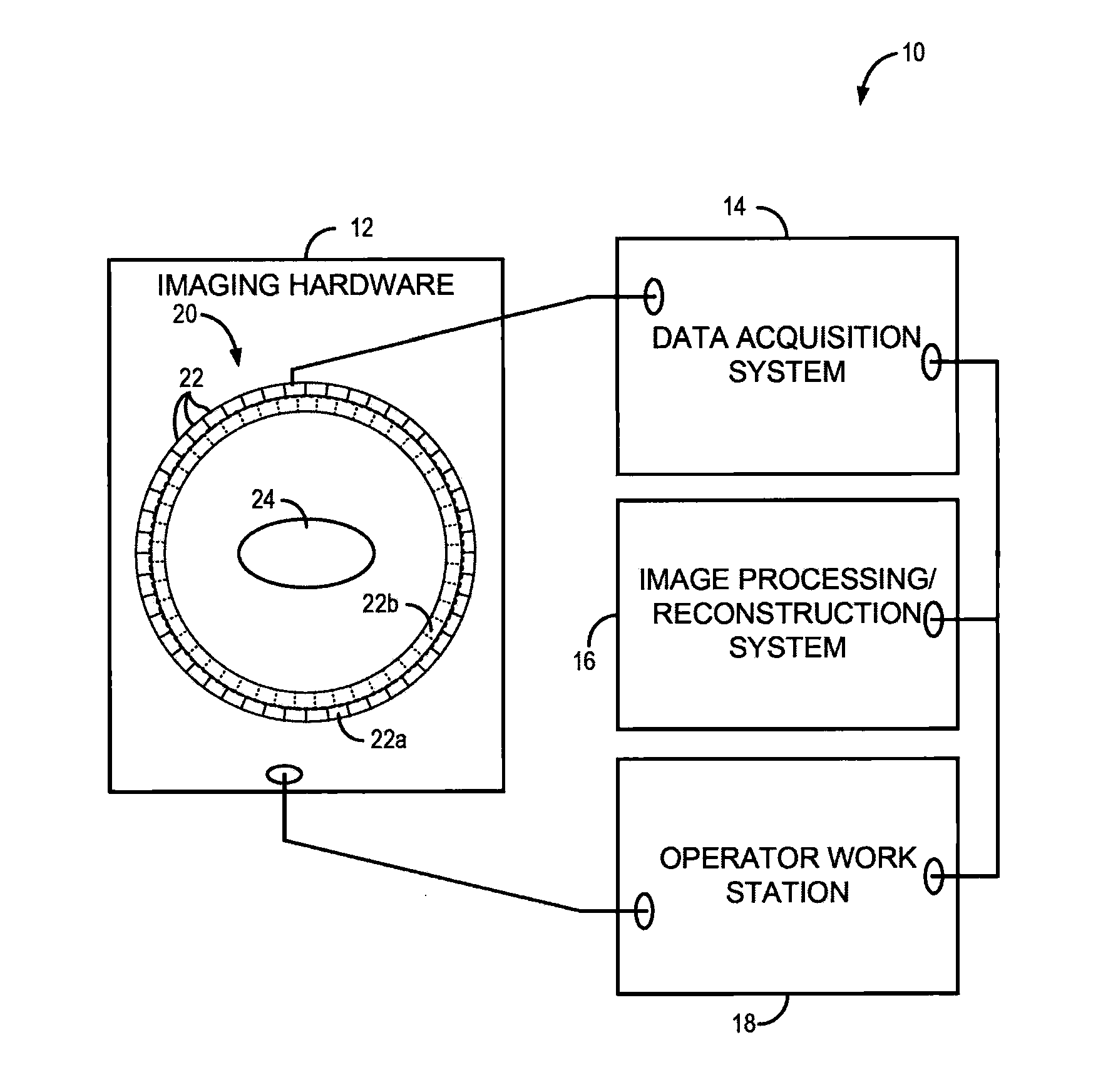Multiplexable emission tomography
a technology of emission tomography and multiplexing, applied in tomography, instruments, applications, etc., can solve the problems of limited emission tomography processes, radiotracer also presents a fundamental limitation on the amount and type of clinical information that can be acquired, and traditional emission tomography system and methods are generally limited to investigating or considering one biological or physiological target of investigation
- Summary
- Abstract
- Description
- Claims
- Application Information
AI Technical Summary
Benefits of technology
Problems solved by technology
Method used
Image
Examples
Embodiment Construction
[0026]The present invention recognizes that one of the great strengths of emission tomography, such as positron emission tomography (PET), is the ability to obtain images with high spatial resolution and sensitivity using any of a number of molecular or physiologic targets and different radiotracers. The development of new probes for imaging hypoxia, cell proliferation, blood flow, and numerous other molecular targets, which offers high potential for better diagnosis, characterization of disease, and image-guided personalized medicine. However, much of this potential remains unrealized because current technology permits only one radiotracer to be imaged at a time. Consequently, multiple scanning sessions need to be coordinated, and even scheduled on different days, to obtain complementary information from multiple radiotracers, which results in high costs, image alignment issues, and a long and onerous experience for the patient. As will be described, the present invention overcomes...
PUM
 Login to View More
Login to View More Abstract
Description
Claims
Application Information
 Login to View More
Login to View More - R&D
- Intellectual Property
- Life Sciences
- Materials
- Tech Scout
- Unparalleled Data Quality
- Higher Quality Content
- 60% Fewer Hallucinations
Browse by: Latest US Patents, China's latest patents, Technical Efficacy Thesaurus, Application Domain, Technology Topic, Popular Technical Reports.
© 2025 PatSnap. All rights reserved.Legal|Privacy policy|Modern Slavery Act Transparency Statement|Sitemap|About US| Contact US: help@patsnap.com



